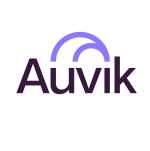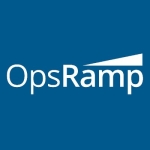What is our primary use case?
Right now we have two or three clients that have medium to large data centers, and we use LogicMonitor to give us an overview of the status of the infrastructure: if there are any holes or any issues either with memory, CPU, or storage devices, such as how much storage is consumed.
One of them is an insurance company which has a presence here in Puerto Rico and in the U.S. It employs about 5,000 people and has two data centers in Puerto Rico and two more in Florida. Their main data center is in Atlanta with disaster recovery in North Carolina. That one is what I would consider a large environment. We also have a medium-size company in the communications area here in Puerto Rico and has about 2,000 employees. It covers all of Puerto Rico. We monitor their infrastructure in terms of servers, storage, and backups, among other things.
We are also monitoring things such as vCenter, its data infrastructure, and NetScaler networking cards. We have a complete overview of the health of the client at a specific moment.
We're using the SaaS solution. Everything resides on the LogicMonitor cloud. We just have connectors to extract the data from different servers that we have.
How has it helped my organization?
It keeps us informed whenever we have an issue. Once it's been configured and LogicMonitor is gathering the information through the connectors, it keeps me and my supervisor informed of any issue on the customer's platform. Sometimes they don't notify us if they're going to reboot a server, so we get notified whenever the server is rebooted. Or if there is a server having memory processor or storage problems, it keeps us one step ahead of such situations. If they call us and say that they have a problem, we can say, "We noticed that you rebooted the server," so it gives us an advantage.
The solution provides granular alert-tuning for devices. For example, in virtual environments you have to take into consideration that the virtual machines have available vCPUs. There is a specific metric called "vCPU per CPU percent" and we monitor that data point because it will let us know whenever we have too many virtual machines for the available CPUs on a hypervisor. That has helped us a lot. We do automatic reports on that every morning, just to check how the virtual environment is behaving in terms of the availability of vCPUs.
We also use its AIOps for root cause analysis and it is very good. We do have to adjust the thresholds at times for specific points that we are looking for, but once that is done, it works like a charm. We have no issue with that at all. We get the alerts we want at the time that we need them. This definitely helps us to be more proactive in resolving issues and preventing problems because we don't have to waste time entering, for example, vCenter to look for metrics. Checking one of the clients could easily take me more than an hour, just to check that everything is fine. With LogicMonitor, we receive the alerts whenever there is an issue and that allows us to work more easily and be more proactive instead of being reactive.
It has also helped us to automate. Depending on the kind of alerts, the person who works in a specific area is notified, so I don't get all the alerts myself. We have storage, virtual infrastructure, and Citrix. So whenever there is an issue with Citrix, the person from Citrix is notified. If it is with storage or infrastructure, the right person is notified.
In the morning, without LogicMonitor, it could take about an hour to an hour and a half to go through every system. Right now, I just check my dashboards and I know if there's something that needs to be addressed. Most of the time we get notified either by email or by SMS if there is something that we need to take care of, in terms of infrastructure and storage. Looking at the dashboard takes about 15 minutes and we know that everything is working fine.
What is most valuable?
There are at least two most valuable features for us. I really appreciate the reporting function because it allows me to create dashboards that will be emailed to me during the morning so that I have a complete overview of my client's health, within a specific time frame.
One of the dashboards I use a lot is the storage dashboard. We migrated recently from one storage to another, and it allows me to keep everything in focus: How much space am I using, how much is being compressed, how much is being deduplicated? It also provides predictive functionality: How long will it take to fill this disk? That helps us to make decisions on whether we need to buy more space or we need to move or rearrange something within our storage infrastructure. I like that dashboard very much.
The other valuable feature is the alerts. We receive alerts by email and SMS with escalation schemes, so if we notice that an issue is not addressed in a specific amount of time, it will escalate to the next person in the chain. We can rest assured that specific problems are resolved within a specific time frame. Because we receive the alerts by email and SMS, whether I am at my computer or not, I will still receive the messages through SMS on my phone. That is a really cool feature.
In terms of the overall reporting of LogicMonitor, at first it was a little bit confusing. But once you get the hang of it, it's pretty easy to add the widgets and arrange the information that you need or to filter it. It's pretty easy to use.
What needs improvement?
The process of upgrading some of the collectors has been a little bit confusing. I need to understand that better.
Buyer's Guide
LogicMonitor
April 2025
Learn what your peers think about LogicMonitor. Get advice and tips from experienced pros sharing their opinions. Updated: April 2025.
848,989 professionals have used our research since 2012.
For how long have I used the solution?
I've been using LogicMonitor for about three years.
What do I think about the stability of the solution?
It's pretty stable. I haven't had issues with the collectors being disconnected. Whenever I see that there is no data flowing from the environment to LogicMonitor, it is mostly because somebody has changed a password on the host or on my host. As soon as I fix it, everything just keeps on working, straight up.
I believe we've only had an issue where a collector disconnected from the cloud. It happened to my supervisor and he just removed the collector and installed a new one and everything has been working out fine since. The solution's ability to alert whenever we have a disconnection of the collector to the cloud is an advantage.
What do I think about the scalability of the solution?
It has pretty good scalability. We have added several servers and I haven't seen any problems or issues at all.
The topic of increasing our use of LogicMonitor is being discussed, but it's mostly my manager discussing it with the group of managers and the owner of the company. I am not aware of any plans, but it has been mentioned that there is a possibility of expanding.
How are customer service and support?
I haven't used LogicMonitor's technical support. Every time that I need to validate or make some changes in a configuration, the support page is pretty helpful. I have found the answers to all my questions there, so I haven't needed to contact support.
Which solution did I use previously and why did I switch?
I don't believe the company had a previous solution.
How was the initial setup?
I wasn't involved in the initial deployment. However, in terms of configuration, I have done many rearrangements of specific hardware and discovery of new equipment. That was pretty easy. It didn't take that much for the configuration, mostly for storage or infrastructure, like hypervisors. It was pretty straightforward. The Help page is pretty straightforward too. You will find what you're looking for.
LogicMonitor monitors most devices out-of-the-box. I was pretty amazed with all the documentation on how to configure specific hardware, like Citrix NetScaler ADC and PureStorage FlashArray. Those were pretty easy to configure. Other things it was able to monitor out-of-the-box include Veeam Backup, NetBackup, VMware, Windows Server — all the versions that we're using are supported — SQL Server, Linux servers, Red Hat, Oracle. Those are a few that come to mind.
What was our ROI?
I believe we have seen return on our investment because we are receiving alerts and dashboards for specific time frames, so whenever there is a problem with some part of the infrastructure, we're able to provide the customer with valid information on what's happening and what was happening. It allows us to document things whenever root cause analysis is required for an issue.
What's my experience with pricing, setup cost, and licensing?
I don't know much about the pricing. My manager handles that. But I believe that, at least from his comments, the pricing is pretty reasonable for the licensing that we have.
What other advice do I have?
The big lesson I have learned from using LogicMonitor is to pay attention to the alerts we receive. Things get escalated to me whenever guys from the other teams do not acknowledge their alerts. I need to pay attention to those because they will tell us whenever a computer or server is being rebooted or if the drives are getting full.
There are six of us in my company on the services and support side. My manager is the person who actually configures it. In addition to me, there is the principal IT consultant for services and support. I do mostly storage and power infrastructure, in terms of servers. We have two more guys who work with Citrix. And there is another guy who does mostly networking. He works mostly with NetScaler ADC.
I give LogicMonitor 10 out of 10. From the time that I started using it, I haven't had any issues with the software at all. I get notified whenever they're doing upgrades and, whenever I need to do an upgrade to my collectors, I get the information with plenty of time to make arrangements if there is something else that needs to be done. I don't believe there have been any upgrade procedures have been done on the platform that have impacted us in any way. It's been a really stable and trustworthy platform.
Disclosure: PeerSpot contacted the reviewer to collect the review and to validate authenticity. The reviewer was referred by the vendor, but the review is not subject to editing or approval by the vendor.

















